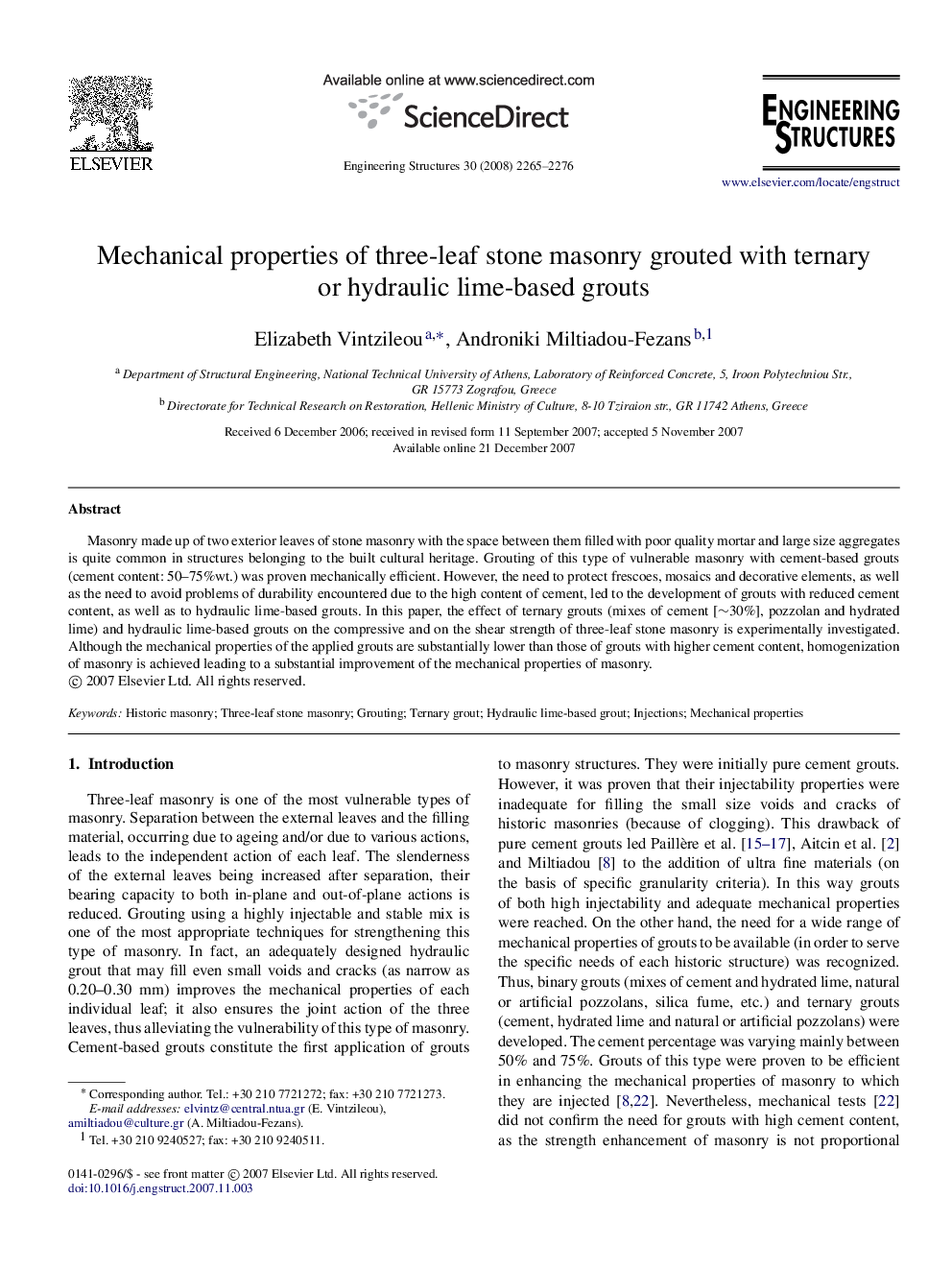| Article ID | Journal | Published Year | Pages | File Type |
|---|---|---|---|---|
| 269134 | Engineering Structures | 2008 | 12 Pages |
Masonry made up of two exterior leaves of stone masonry with the space between them filled with poor quality mortar and large size aggregates is quite common in structures belonging to the built cultural heritage. Grouting of this type of vulnerable masonry with cement-based grouts (cement content: 50–75%wt.) was proven mechanically efficient. However, the need to protect frescoes, mosaics and decorative elements, as well as the need to avoid problems of durability encountered due to the high content of cement, led to the development of grouts with reduced cement content, as well as to hydraulic lime-based grouts. In this paper, the effect of ternary grouts (mixes of cement [∼30%], pozzolan and hydrated lime) and hydraulic lime-based grouts on the compressive and on the shear strength of three-leaf stone masonry is experimentally investigated. Although the mechanical properties of the applied grouts are substantially lower than those of grouts with higher cement content, homogenization of masonry is achieved leading to a substantial improvement of the mechanical properties of masonry.
